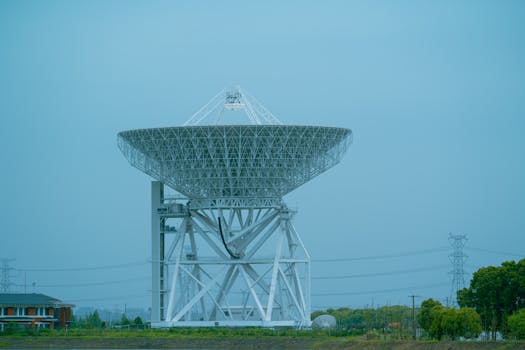The Future is Now: Exploring the Cutting-Edge Innovations in Satellite Telecommunications

The Future is Now: Exploring the Cutting-Edge Innovations in Satellite Telecommunications
Satellite Telecommunications is at the forefront of innovation, with new technologies and advancements emerging every day. The future of satellite telecommunications is now, and it’s more exciting than ever. In this article, we’ll delve into the latest developments and explore the cutting-edge innovations that are shaping the industry.
One of the most significant advancements in satellite telecommunications is the development of high-throughput satellites (HTS). These satellites offer significantly higher bandwidth and faster data transfer rates than traditional satellites, making them ideal for applications such as broadband internet, video streaming, and mobile connectivity. HTS have the potential to bridge the digital divide, providing connectivity to remote and underserved communities around the world.
Another area of innovation is in antenna technology. Advanced antenna systems, such as phased arrays and active electronically scanned arrays (AESA), are being developed to improve the performance and efficiency of satellite communications. These antennas can dynamically steer and shape beams, allowing for more precise and efficient use of bandwidth. This technology has the potential to increase the capacity and availability of satellite services, making them more competitive with traditional fiber-based networks.
Advances in Satellite Propulsion and Power
Satellite propulsion and power systems are also undergoing significant advancements. New propulsion systems, such as electric propulsion and advanced ion engines, are being developed to improve the efficiency and lifespan of satellites. These systems can significantly reduce the mass and cost of satellites, making them more accessible and affordable for a wider range of applications.
In addition, advances in solar panel and battery technology are enabling satellites to operate for longer periods and with greater efficiency. This is particularly important for satellites in geostationary orbit, which require a reliable and consistent source of power to maintain their position and operation.
The Role of Artificial Intelligence and Machine Learning
Artificial intelligence (AI) and machine learning (ML) are playing an increasingly important role in satellite telecommunications. AI and ML algorithms can be used to optimize satellite operations, such as predictive maintenance and anomaly detection. These technologies can also be used to improve the performance and efficiency of satellite communications, such as by optimizing beamforming and resource allocation.
Furthermore, AI and ML can be used to enhance the security and integrity of satellite communications. For example, AI-powered systems can detect and respond to cyber threats in real-time, protecting sensitive information and preventing unauthorized access.
Conclusion
In conclusion, the future of satellite telecommunications is now, and it’s more exciting than ever. With cutting-edge innovations in HTS, antenna technology, propulsion and power systems, and AI and ML, the possibilities are endless. As the industry continues to evolve, we can expect to see even more innovative solutions and applications emerge, transforming the way we communicate and interact with each other.


